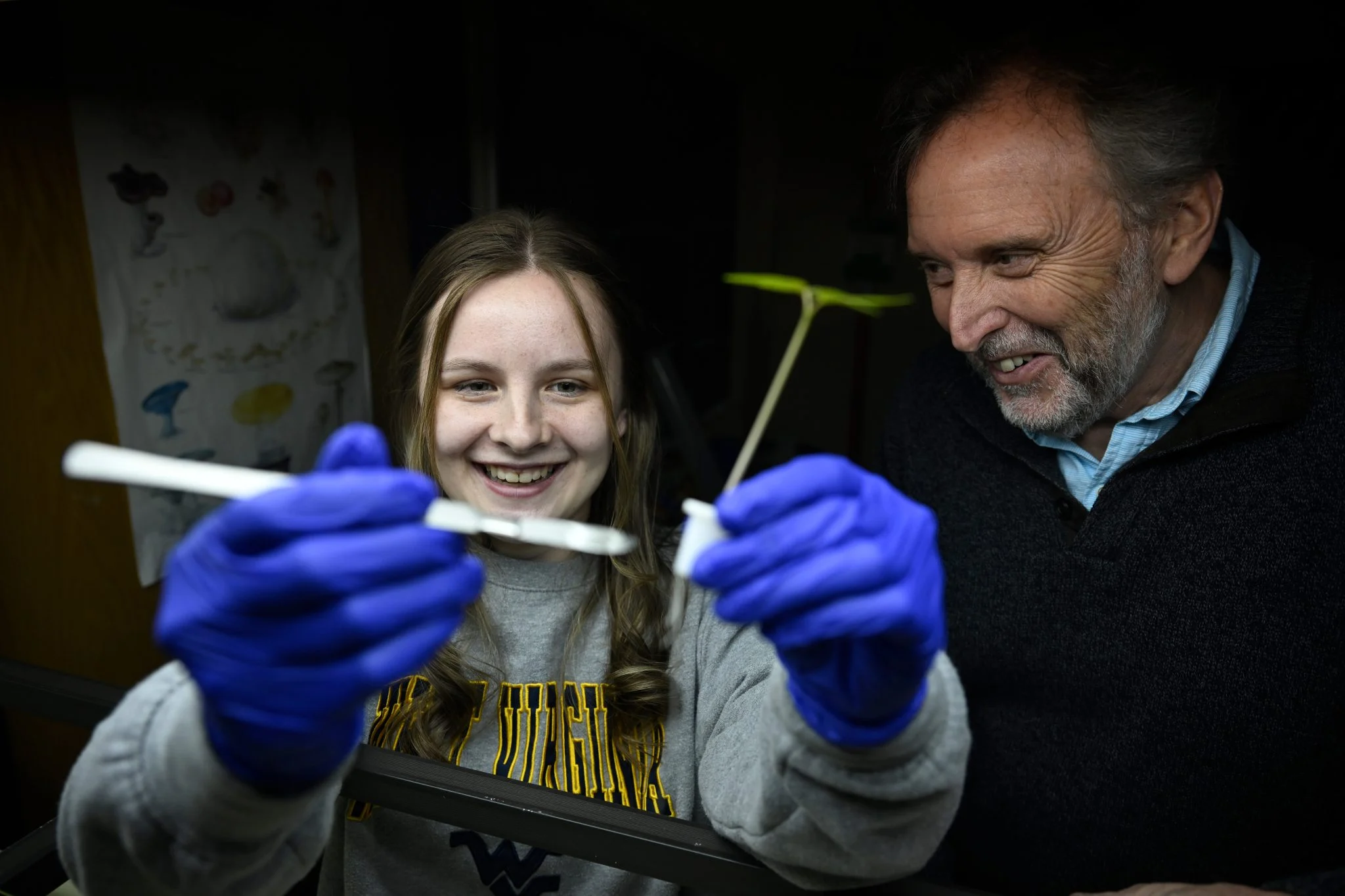WVU junior Corinne Hazel and faculty member Daniel Panaccione discovered a new species of fungus that may treat a variety of medical conditions. Credit: WVU Photo/Brian Persinger
A Plant Mystery Finally Solved After 80 Years
For decades, scientists were puzzled by the morning glory plant. Its seeds contain lysergic acid amide (LSA), a natural compound similar to LSD. But no one knew where these powerful chemicals came from. Now, after 80 years, researchers have finally found the answer.
This long-awaited discovery solves a mystery that has fascinated botanists, chemists, and psychedelic researchers alike.
The Missing Piece: A Hidden Fungus Inside the Plant
Meet Periglandula clandestina
Scientists Corinne Hazel and Daniel Panaccione from West Virginia University have discovered a fungus called Periglandula clandestina. It lives inside the morning glory plant and produces the psychoactive compounds found in its seeds.
For years, researchers thought the plant made these compounds by itself. However, this study reveals it is actually the fungus that creates them. This partnership between plant and fungus is both rare and powerful.
Why This Discovery Matters
Understanding Natural Psychedelics
This finding is a big step forward. It helps explain how some plants develop psychedelic properties. It also shows how important fungi can be in producing bioactive chemicals. As a result, scientists now have a better idea of how nature works behind the scenes.
Future Uses in Science and Medicine
By learning how this fungus makes lysergic compounds, researchers may develop new ways to create treatments for mental health conditions. This could lead to safer, more natural alternatives to lab-made drugs.
Patience, Curiosity, and Scientific Breakthroughs
A Mystery Eight Decades in the Making
This discovery is a reminder that science takes time. Even when questions go unanswered for years, persistence can lead to amazing results. Thanks to modern tools like DNA analysis, scientists can now uncover secrets that were once hidden in plain sight.
What Other Secrets Does Nature Hold?
This breakthrough opens the door to more discoveries. What other plants may be hiding secret fungal partners? Could these hidden fungi hold the key to future medicines or new understandings of life itself?
Nature is full of mysteries—and now is the perfect time to explore them.
Reference: “A new species of Periglandula symbiotic with the morning glory Ipomoea tricolor” by Corinne M. Hazel and Daniel G. Panaccione, 22 April 2025, Mycologia.
DOI: 10.1080/00275514.2025.2483634
Daily science news 2025, Best science blogs 2025, New science research 2025, Popular science articles, Latest science news 2025










